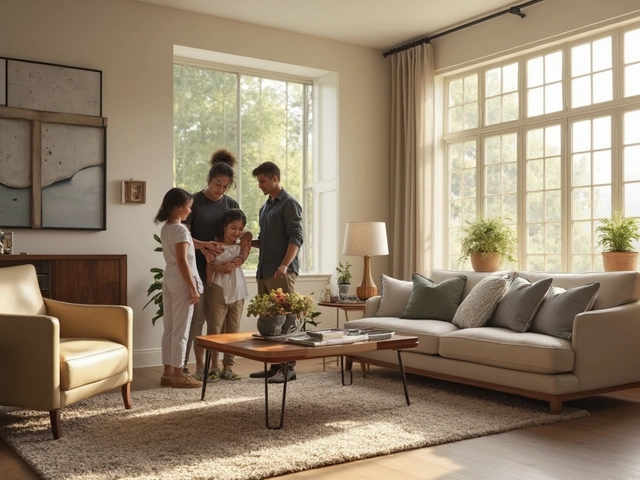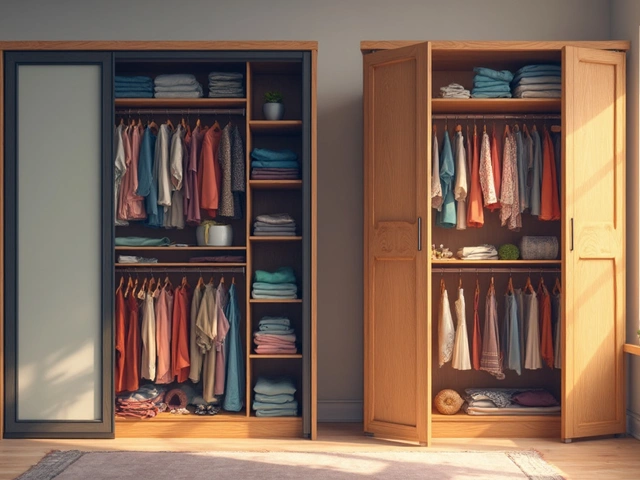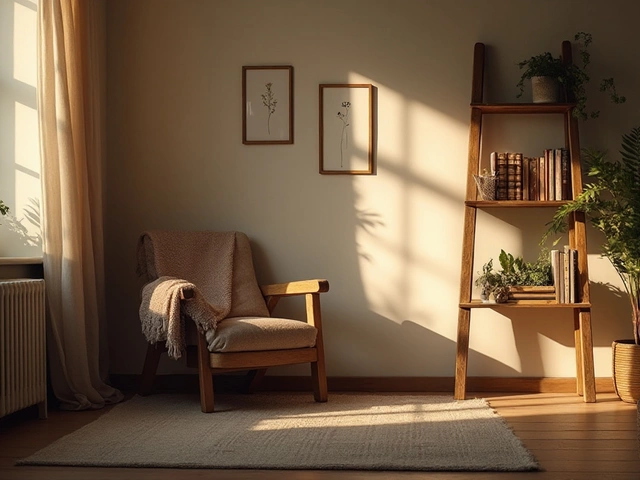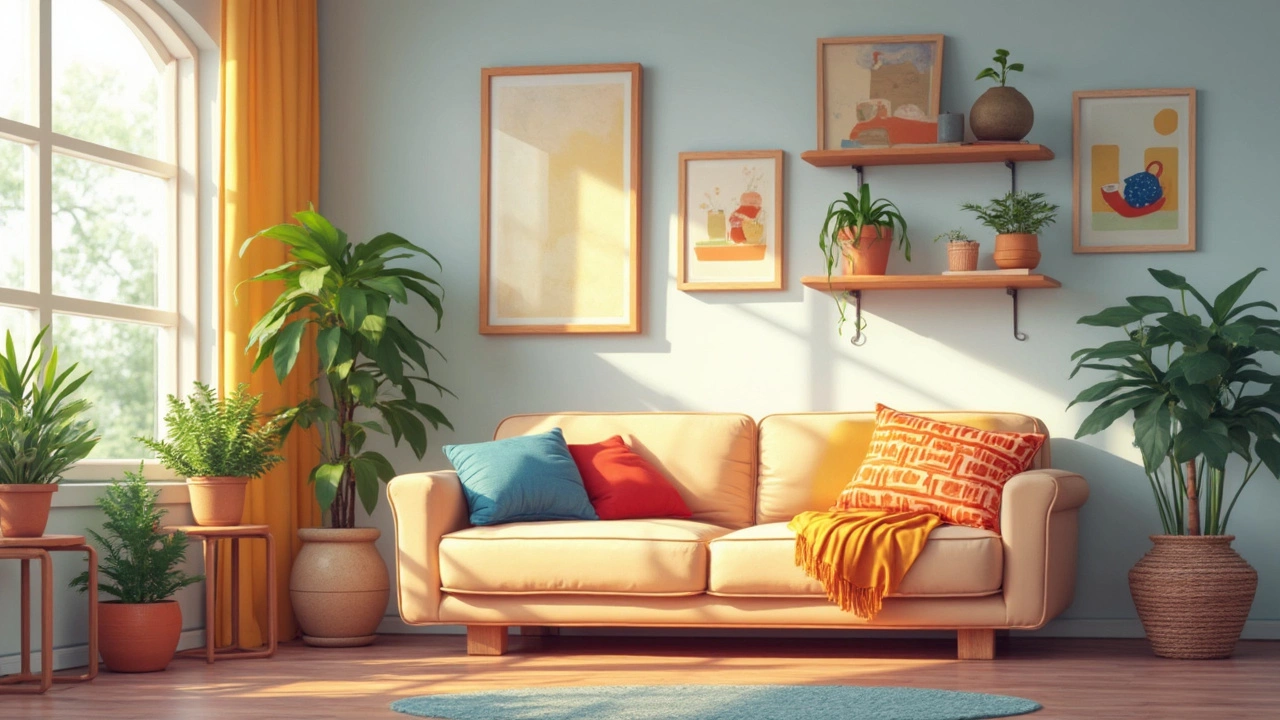
You don't need a degree in design to make your living room look like it belongs on Pinterest. It usually starts with small changes that make a big difference. Ever heard the trick about choosing one great piece—like a bold rug or a comfy sofa—and building around it? That move saves time and gives your room a clear vibe right out of the gate.
Don’t shy away from color. A fresh wall color or even swapping out just a couple throw pillows can totally change how your room feels. And if you rent, stick to things you can easily switch out. Plants or a cool floor lamp will make a bigger impact than you think.
Worried about the budget? You’ll find great stuff secondhand, especially if you check local apps or thrift shops for deals. Mixing old and new isn’t just budget-friendly, it also makes your space feel unique. Watch out for buying everything from the same store—your place will end up looking like a showroom instead of home.
- Set Your Mood with Color
- Smart Furniture Choices
- Layering with Textures and Patterns
- Lighting that Changes Everything
- Personal Touches: Art, Plants, and Finds
Set Your Mood with Color
Color shapes how you and your guests feel every time you walk into your living room. Some colors boost your energy, while others help you relax. If you want a chill, calming vibe, go for light blues or greens. These shades are proven to slow your heart rate, which is why you see them in spas and even hospital waiting rooms.
If you’re more about having a vibrant, lively space, try pops of yellow, orange, or even a bold teal. These brighten the room and make it easier to socialize. A lot of designers say to use the "60-30-10" rule: make about 60% of your room one main color (like walls or a big rug), 30% a secondary color (maybe your sofa or curtains), and 10% for little accents (cushions, art, or vases).
Here’s a quick way to play with colors without stress:
- Start with a main color you love—maybe a wall or a big piece of furniture.
- Add in one or two "secondary" colors for stuff like blankets, chairs, or shelves.
- Mix in accessories in a totally different, smaller color for some interest.
Afraid of commitment? Use removable wallpapers or peel-and-stick tiles. They’re renter-friendly and can totally switch up the mood. Even just swapping out throw pillows or blankets every season keeps your living room decor feeling fresh. If your space feels off, chances are you just need to adjust the color balance, not throw everything out and start over.
Smart Furniture Choices
It’s easy to get overwhelmed by options, but a few smart picks can completely change your living room’s function—plus, make it way more comfortable. For starters, think about your actual needs. If you host friends often, a sectional or a sleeper sofa wins over a tiny loveseat. But if space is tight, a couple of slim accent chairs might give you more options than one big couch.
Scale matters more than people think. Big furniture in a small room makes everything feel cramped. The golden rule: leave at least 18 inches between the coffee table and the sofa. This isn’t just about looks—it’s for moving around without bumping your knees.
If you’ve got a mixed crowd or pets, look for furniture covers or removable cushion cases (IKEA leads the pack with options you can toss in the wash). Multi-use furniture, like ottomans that open for storage, wins bonus points for keeping things less cluttered. And don’t just buy everything new. Mixing in a vintage side table or a thrifted chair makes your living room decor stand out and feel like, well, yours.
- Measure before you buy. Sketch your layout on paper, or use free online room planners. Saves a ton of headache later.
- Think of flow. Don’t block doors or windows—natural light changes how everything looks.
- Lower-profile furniture opens up the room if you’ve got low ceilings. Tall bookcases or cabinets work in spaces with extra height.
Here’s a quick look at furniture size basics for a medium living room:
| Item | Recommended Size |
|---|---|
| Sofa | 72-84 inches wide |
| Coffee Table | 40-48 inches long, 18-20 inches high |
| Accent Chair | 28-32 inches wide |
| Area Rug | At least 5x8 feet (bigger if possible) |
Before getting new furniture, try moving your current pieces around. Sometimes, just shifting the sofa or swapping side tables makes the room feel fresh without spending a dime.
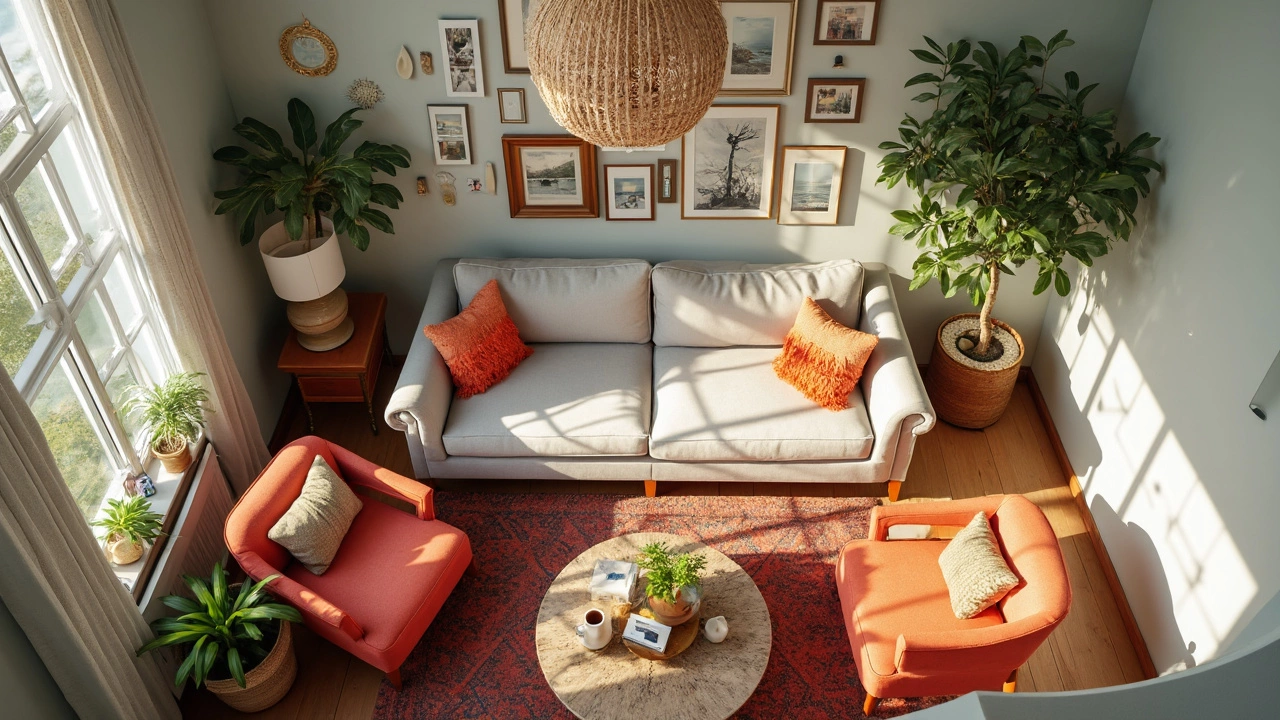
Layering with Textures and Patterns
Layering textures and patterns turns a plain living room into a cozy space that feels thoughtful and lived-in. It goes way beyond just picking a few throw pillows. Real designers use this move all the time because it makes a room feel super inviting, even for people who aren't huge fans of bright colors or bold designs. Just imagine your usual couch, but with a chunky knit blanket, a velvet cushion, and maybe a woven basket nearby—the look instantly feels richer and more relaxed.
Start with basics like your sofa or rug, and add from there. You can pile on soft fabrics (think blankets, knitted poufs, or a suede ottoman) without making it look like a mess if you stick to a common color scheme. When you mix patterns—like stripes with florals or checks with geometric shapes—the trick is to keep the colors related. Nothing beats a well-chosen living room decor combo that feels both balanced and welcoming.
According to Emily Henderson, a well-known interior stylist, mixing textures is key:
"A room without textured variety can fall flat, but a carefully layered room feels both cozy and complete."If you’re worried about going overboard, dial it back and try one eye-catching piece—like a patterned area rug or a chunky cable-knit throw—to see how it feels first. Then add other subtle touches, like a jute basket or a glass lamp.
- Use no more than three different patterns at once, and make sure at least one is neutral or simple.
- Combine textures like smooth leather, soft cotton, and touchable knits for a mix that works all year.
- If your sofa is solid, pick patterned curtains or rugs to add life without chaos.
- Natural textures—like wood, rattan, or stone—instantly make the space feel warm and modern.
Stores like IKEA, Target, or even local markets have tons of affordable textured accessories you can try out. You don’t need to spend big—sometimes the best pieces are thrifted or handed down. Mix, match, and edit until your space feels just right for movie nights or having friends over.
Lighting that Changes Everything
Lighting can seriously upgrade your living room game. Forget that one lonely ceiling light in the middle of the room. Using different types of lighting makes your space feel more interesting and much cozier.
Three main types matter: overhead, task, and accent lighting. Overhead lights, like ceiling fixtures, light up the whole room. Task lighting—think floor lamps next to your reading chair or a table lamp by the sofa—helps with stuff like reading or working on your laptop. Accent lighting, like LED strips under a shelf or wall sconces, brings attention to cool stuff you want people to notice, like art or bookcases.
Want that warm and inviting vibe? Mix in some soft bulbs, usually marked as 2700K or “warm white.” These tones are softer on the eyes compared to the harsh blue of cool-white LEDs, especially at night when you want to wind down. Smart bulbs make it easy to change color or brightness with your phone—no electrician needed.
Positioning matters too. Place lamps in corners to make the room look bigger. Use wall lights to highlight one thing, like a bold painting. And if you love that "Instagram look," fairy lights or LED strips along the back of the TV do wonders.
Don’t forget natural light. Keep windows clear of heavy drapes during the day, just use blinds or lighter curtains if you want privacy. That quick change can help your living room decor feel less stuffy without spending money.
- Layer several types of lighting for the best effect.
- Go for dimmers if you want total control over the mood (they’re easy to install).
- Try moving your lamps and see how the light shifts—sometimes you find a sweet spot by accident.
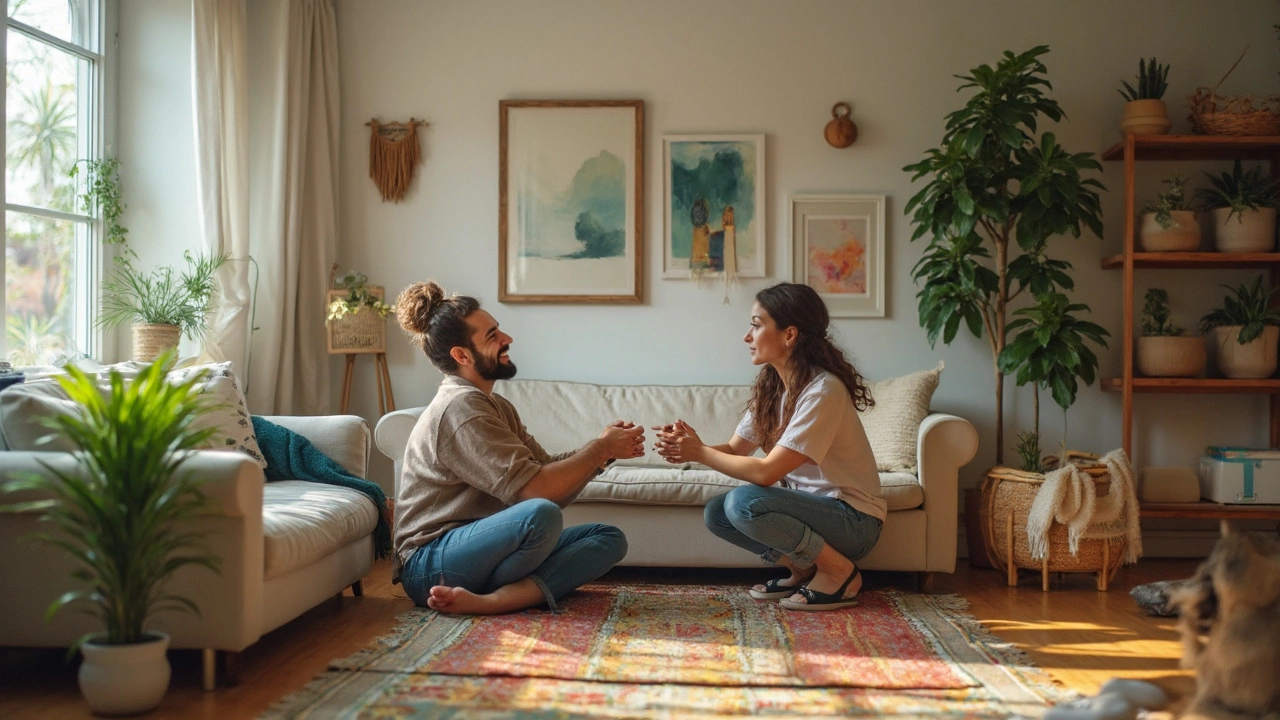
Personal Touches: Art, Plants, and Finds
Here's where your living room really starts to show some personality. Generic rooms feel flat because nothing in them tells your story. You change that with a few smart moves—and you don't need to spend a fortune.
First off, art doesn't have to mean expensive prints or oversize paintings. Family photos in mismatched frames, your kid's drawings, or a band poster you still love can all go up on the wall. Check out gallery walls—just a mix of different frames and sizes gives you instant interest. Statistically, rooms with wall art get rated nearly 20% higher for "feeling finished" in home decor surveys compared to those without.
Plants do more than look good. NASA’s famous Clean Air Study found several common houseplants actually improve indoor air quality. Here are a few easy winners:
- Snake plant — super tough, barely needs watering.
- Pothos — good for hanging and can handle low light.
- Peace lily — blooms indoors and works for low-light corners.
If you think you kill every plant, try a fake one. Plenty look real enough now that guests won’t notice.
Decor finds make your space feel lived-in and real. Maybe it’s a ceramic bowl from a trip, or an old thrifted clock. Keep it practical—if it has a story, it’ll spark conversations. And don’t overfill the space: pick a few pieces and give them room to breathe.
| Item | Benefit | Tip |
|---|---|---|
| Art/Wall Prints | Adds style & tells your story | Mix frame styles for interest |
| Plants | Improves air; adds freshness | Group 2-3 for impact |
| Personal Finds | Gives the room a unique look | Rotate seasonally for a fresh vibe |
Blend these touches into your living room decor and suddenly your space feels a lot less generic. It’s these small, thoughtful additions that take a room from okay to awesome.

